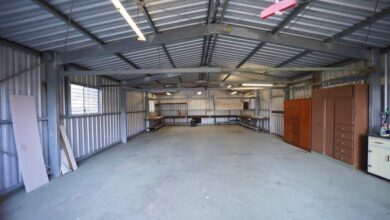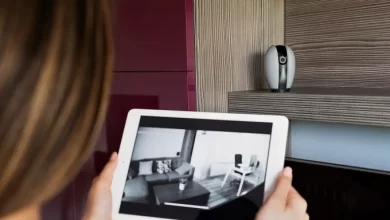Should You Use Roofing Paper as Underlayment for Laminate Flooring?

Installing laminate flooring can seem deceptively simple, but some key steps shouldn’t be overlooked if you want your new floors to last. One of those is using the right underlayment. But can you get away with something as simple and inexpensive as roofing paper instead of a specialty underlayment?
What Is Underlayment and Why Does Laminate Flooring Need It?
Before we dive into whether roofing paper makes a good laminate flooring underlayment, let’s review the purpose of underlayment in general.
Underlayment goes under laminate flooring to provide:
- Cushioning – This protects the laminate from subfloor imperfections that could otherwise telegraph through and damage the flooring planks.
- Moisture protection – It creates a protective barrier to prevent moisture from seeping into the laminate boards and warping them.
- Sound reduction – Underlayment helps muffle noise when you walk across the floor. This is especially important for laminate since it tends to be noisier than other types of flooring without underlayment.
So in short, the right underlayment ensures your laminate flooring looks great and lasts a long time.
Now let’s look at roofing paper and whether it can get the job done.
What Is Roofing Paper?
Roofing paper, also called roofing underlayment, is a material that goes under shingles and other roof coverings. Its purpose is to:
- Add a protective layer over the roof decking
- Shed water so the roof framing and sheathing stay dry
There are a few different types of roofing underlayment:
Asphalt-Saturated Felt Paper
The most common type is an asphalt-coated felt paper that provides a water-resistant barrier. Asphalt felt paper comes in different weights, with heavier grades offering more durability.
Pros:
- Inexpensive
- Works adequately for the temporary roof covering
Cons:
- Absorbs moisture over time
- Needs frequent replacement
- Not very durable long-term
Rubberized Asphalt Underlayment
This type has a rubberized asphalt coating instead of conventional asphalt. The rubber makes it more flexible and durable. Rubberized asphalt paper stands up better to foot traffic when used as a staging surface during reroofing projects.
Pros:
- More tear-resistant than felt paper
- Maintains effectiveness when wet
Cons:
- More expensive than felt paper
Synthetic Roof Underlayment
Synthetic underlayment consists of woven or non-woven polypropylene coated with polymer-modified asphalt. It’s the strongest and most advanced type of roofing underlayment.
Pros:
- Extremely durable and long-lasting
- Lightweight and easy to install
- Provides the best walkability for roof work
Cons:
- More expensive than asphalt felt or rubberized asphalt
So in a nutshell, plain roofing paper is inexpensive and handy for short-term roof protection, but it lacks durability for permanent use. Let’s look more closely at how it stacks up as underlayment for laminate flooring.
Key Differences Between Roofing Paper and Laminate Flooring Underlayment
There are some important performance differences between basic roofing paper and specialty underlayment designed for laminate flooring:
Cushioning Ability
Roofing paper rests on solid roof decking so cushioning ability is irrelevant. By contrast, proper underlayment for laminate flooring needs to create a buffer that absorbs imperfections in the subfloor that could otherwise damage laminate planks. Essential cushioning ability is the biggest reason not to use basic roofing paper under laminate.
Moisture Protection
The moisture barriers in roofing paper are only intended to provide temporary water resistance before shingles or other permanent roof coverings are installed. That level of moisture protection isn’t sufficient for laminate flooring underlayment that needs to prevent moisture damage long-term.
Sound Insulation
Basic roofing paper does nothing to muffle noise. Proper underlayment for laminate should contain sound-deadening materials to reduce footsteps and create a quieter floor.
Odor
Some grades of asphalt roofing paper have an odor that persists for several days after unrolling. That smell can permeate the laminate flooring installed over it. Underlayment designed for indoor use is low-odor or odor-free.
Longevity
Basic roofing paper starts deteriorating after several months of exposure to the elements. Laminate underlayment needs to last as long as the floor itself without compressing, crumbling, or losing moisture resistance over decades of use.
So while roofing paper is affordable and better than nothing, it doesn’t provide the cushioning, sound insulation or long-lasting moisture barrier that laminate flooring requires. Let’s look at why that’s a problem.
Why Proper Underlayment Matters for Laminate Floors
Installing laminate over insufficient underlayment can lead to some ugly consequences down the road:
Visible Subfloor Imperfections
Without a cushioning buffer, minor irregularities in the subfloor get transferred right through the laminate planks. This can create visible bumps and dents in the flooring that worsen over time.
Hollow Sounds
Lack of sound-deadening underlayment also means you hear loud clicking noises every time someone walks across the floor. It’s like tap dancing on a gym stage.
Moisture Damage
If leaked or condensed moisture reaches the laminate without an underlayment barrier to stop it, the bottom edges of the planks can swell, warp, and delaminate.
Shortened Flooring Lifespan
A combination of the above flaws caused by improper underlayment leads to premature damage to the laminate flooring as a whole. The result is expensive tearing out and replacement long before the 20-25 years average lifespan of quality laminate.
Voided Manufacturer Warranties
Most laminate flooring warranties are contingent on using underlayment that meets certain thickness and performance criteria. Failure to comply can void coverage for moisture damage, abrasion resistance, or other standard warranty provisions.
As unpleasant as all those outcomes sound, you want to be especially wary of moisture damage if you decide to use roofing paper.
Beware Moisture Damage When Using Roofing Paper Underlayment
The biggest pitfall of using basic roofing paper under laminate flooring is the lack of adequate moisture protection. Since even small leaks or concrete slab condensation can quickly damage laminate if moisture reaches the planks, it’s risky to rely on a product designed only for temporary outdoor water resistance.
You also have to consider that roofing paper usually feels dry at first after unrolling. But that doesn’t mean it will stay that way long installed indoors under laminate flooring.
Depending on the product, roofing paper can absorb and transmit moisture over time instead of blocking it. Even the heavy-duty grades designed for ice barrier roofing applications don’t provide sufficient waterproofing for permanent indoor use.
This means if leaks or moisture get past the roofing paper onto your laminate planks, the swelling and warping damage can be severe and difficult to correct.
Are There More Suitable Alternatives to Laminate Flooring Underlayment?
If the flaws of roofing paper have you looking for a cost-effective alternative underlayment, consider materials like:
Felt Paper – This is thicker, more cushioning, and more moisture-resistant than basic roofing varieties.
Cork – Natural cork underlayment blocks moisture well while providing some cushioning.
Foam – Polyethylene foam offers cushioning and works for floating plank installations. But it has minimal moisture barrier properties without a film backing.
Rubber – Recycled rubber underlayment blocks moisture and has good sound reduction qualities. But it lacks cushioning ability.
The best solution is typically 2-in-1 products that combine foam, cork, or felt with a moisture barrier film backing. This gives you cushioning as well as reliable moisture protection.
Some luxury vinyl and engineered wood plank manufacturers also make matching underlayment products designed specifically for use with their floors. So check manufacturer recommendations for your chosen flooring.
Whichever route you take, be sure to get the thickest underlayment practical for your application. Thicker products generally provide better moisture resistance and longer-term performance without compressing over time. They also reduce noise better while equalizing minor subfloor imperfections under the laminate planks.
Step-by-Step Guide to Proper Underlayment Installation
Underlayment plays a vital role in laminate flooring performance, so you want to make sure it’s installed correctly.
Inspect and Prepare the Subfloor
Your underlayment is only as good as what it goes over, so start by checking for subfloor problems and fixing any issues:
Check for uneven spots – Use a long straightedge to find high and low areas greater than 3/16 inches. Sand down high spots and fill low spots with floor leveler compound once moisture is tested.
Test moisture levels – Use a concrete moisture meter to verify slab moisture is at acceptable levels below 4% for wood subfloors or 75% RH for concrete. Address high moisture issues before installing flooring.
Clean thoroughly – Vacuum up construction debris and dust. Subfloors should be free of contaminants before underlayment goes down.
Proper subfloor prep gives your underlayment and laminate flooring the best chance for smooth, long-lasting performance.
Roll Out Underlayment Over Entire Floor
Once subfloor prep is complete, unroll underlayment over the entire floor going in the same direction your laminate planks will run.
Use underlayment widths that reduce the number of seams you’ll need. More seams mean more chances for moisture to sneak underneath.
Cut sheets to fit room dimensions as needed and seal all seams with adhesive tape made for underlayment. The tape keeps the moisture barrier intact.
If your underlayment lacks a built-in moisture barrier film, apply seam tape to the overlap joints of adjacent rows only. Sealing the underlayment perimeter to walls blocks moisture from escaping, which can damage laminate.
Secure Underlayment Around the Perimeter
Although you don’t want to tape underlayment directly to the walls, it still needs securing around the edges of the room.
Here are two options:
Weighted nails – These special nails pin the underlayment in place without penetration. Simply tap them through the outer edges of underlayment sheets into the subfloor using a hammer.
Double-sided seaming tape – Apply this high-tack tape around the perimeter of the room. Press underlayment edges onto the tape to hold them in place during flooring installation.
Securing the edges prevents underlayment from shifting and bunching up underfoot during laminate plank installation.
Install Laminate Flooring Over the Top
Once the underlayment is rolled out and edges secured, you’re ready to install laminate planks per manufacturer instructions.
Having smooth, flat underlayment underneath makes fitting planks together easier. It also allows the locking mechanisms to fully engage for a tighter floor with better moisture protection.
As you can see, getting your underlayment layer right is an important part of overall laminate flooring success. Taking the time to properly install suitable underlayments leads to better performance and longer flooring lifespan.
Conclusion – Use Quality Underlayment for Your Laminate Floors
While roofing paper may seem like an easy shortcut under laminate flooring, it doesn’t offer nearly the moisture protection and long-term durability that proper underlayment does. Insufficient underlayment inevitably leads to damage to your expensive new floor.
Investing a little more upfront in quality laminate flooring underlayment goes a long way in safeguarding moisture resistance, and sound insulation, and preventing unsightly irregularities from telegraphing through.
Following our step-by-step underlayment installation guide also ensures your laminate gets the smooth, even foundation needed to maximize performance and lifespan. Take those simple steps and you’ll enjoy beautiful, problem-free laminate floors for decades to come.




